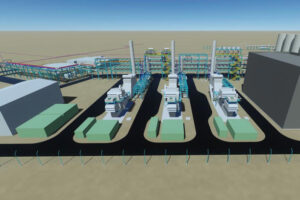Why biomass could be answer to sustainable chemical production
Emma Cooper of Diamond Light Source, the UK’s national synchrotron science facility, discusses why readily available waste products such as biomass could reduce our dependence on fossil fuels.
Professor Edman Tsang from the University of Oxford is on a mission to reduce emissions.
Inspired by the way that nature uses waste products as the building blocks for new materials, Prof. Tsang and his colleagues are investigating how to turn dry plant matter (biomass) into useful chemicals.
Prof. Tsang and his team are designing catalysts (chemicals that increase the rate of a chemical reaction without themselves being consumed by it) to enable the production of fuels and chemicals from biomass. Using one of their new zinc-based catalysts, the team have demonstrated a new method for converting biomass into butene gas, which in turn can be processed into the chemicals used in the production of polymers and resins.
Modern life currently relies on coal, oil and gas – not just for fuel but also as raw materials for the production of chemicals – and the chemical sector is the largest industrial consumer of energy, and the third largest industrial emitter of carbon dioxide. The growing concern regarding the effect of carbon dioxide emissions on our climate is only one reason to reduce our dependence on fossil fuels; we also know that supplies of these non-renewable resources are running out.
In comparison, biomass is a renewable and abundant raw material. In 2016, the United States alone produced 702 million tons of dry biomass in agricultural and forestry waste. Yet the global demand for plastics (just one facet of the chemical industry) is met from petrochemicals, with just 1.7 Mt yr–1 of an estimated global demand of 311 Mt yr–1 being met by bioplastics.
This new research focused on Gamma-valerolactone (GVL), a chemical readily obtained from glucose (which can be produced from the cellulose in biomass). The first step in turning GVL into useful chemicals is to open up its ring structure to give a mixture of pentenoic acids. These acids can then be decarboxylated to produce butene and carbon dioxide. Decarboxylation is the removal of carbon atoms, and in nature this is often accomplished by enzymes that catalyse hydroxy (OH) reactions.
In Prof. Tsang’s work, an engineered catalyst is tucked into a zeolite, effectively a ‘pocket’ that has the right size and chemistry for the necessary reactions. Investigating the detailed structure of this powdered catalyst, and understanding how it works, cannot be done in a common laboratory as X-ray diffraction techniques are not sensitive enough there. Fortunately, significant advances in modern X-ray diffraction facilities using the high brightness of synchrotrons have provided chemists with a powerful tool in studying powder crystalline materials.
For these experiments, the research team were able to use synchrotron X-ray diffraction (SXRD) on beamline I11 at the UK’s national synchrotron – Diamond Light Source – to determine the positions of zinc atoms, and where the GVL ends up inside the structure of the zinc-based catalyst. This was the first use of SXRD to investigate the behaviour of the GVL inside the zinc-based catalyst and the results yielded important information about the reaction mechanism.
The new catalyst shows high catalytic activity and is long-lasting, making it a promising candidate for the decarboxylation of lactones such as GVL in water in future bioprocessing applications. It slowly degenerates over time but it can be regenerated by heating it in air at 600°C for an hour, making it fully recyclable.
Once GVL has been processed into butene gas, it can be processed into heavier chemical compounds, and so the team’s research demonstrates that it is possible to use biomass to produce industrially important chemicals like benzene, toluene and xylene – a significant step towards affordable, sustainable chemical production.















